How to Get Themes in Qualitative Data Analysis
In my past articles, I explained how to perform qualitative coding either through the use of Microsoft Word or through the use of qualitative data analysis software such as Nvivo.
You can check the two articles in this link Qualitative Coding with Microsoft Word and this link Qualitative Coding in Nvivo.
After coding, we need to move to getting themes.
In this article, I’ll be showing you how we get themes in the qualitative data analysis.
If you look at the Braun and Clark six step framework for thematic analysis, getting themes is the third step which comes after familiarizing the data and generating initial codes.
This means that we get themes from looking at a shared pattern of meaning among different codes.
We combine codes with a shared pattern of meaning together to form themes.

The Description of Themes
Let’s see how we can get themes after doing the initial coding.
For this article, I’m going to use an example of a study, teachers challenge in executing alternatives to corporal punishment in secondary schools.
Previously I analysed transcripts related to this data and I came up with some codes.
And now based on the interview questions, if I open them, these are the interview questions that are being asked in the transcripts.
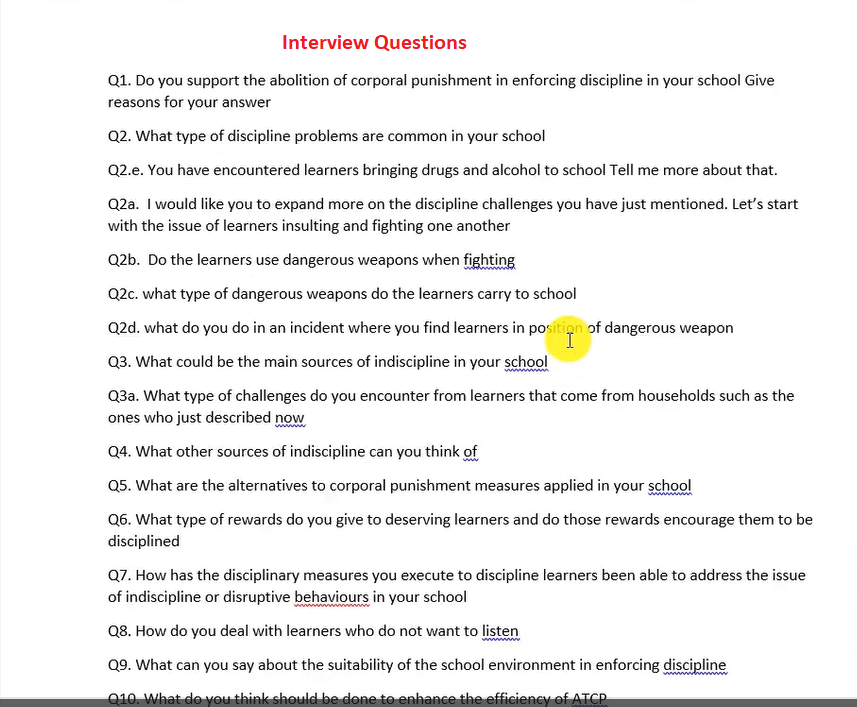
Interview Questions
I went in and started coding and the codes; I tagged the codes with different colours based on the original questions they came from.
If a code came from question number one, for instance, it was red, question number two, it was blue, question number three, it was purple and so on and so forth.
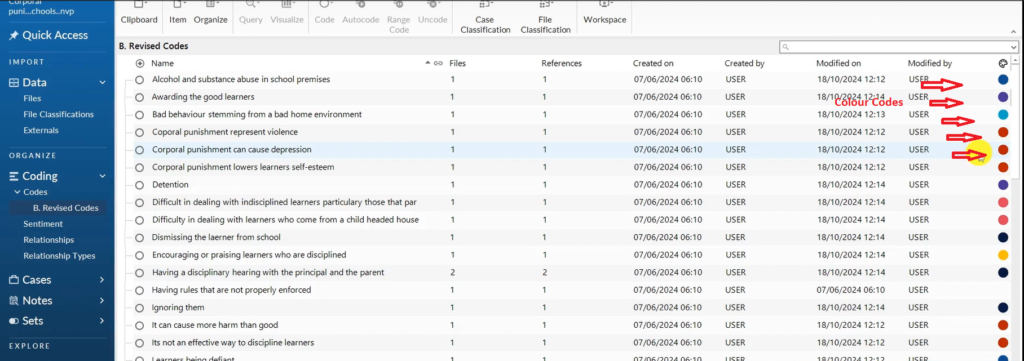
Colour Coded Codes
I tagged these codes in different colours to just have a way of looking at codes together so that we can generate themes as I’m going to show you.
Back on this project, you can see the initial codes after analysing the files.
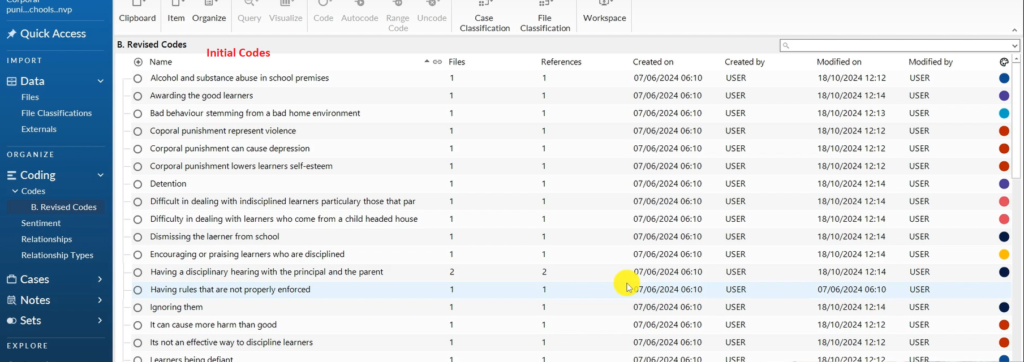
Initial Codes Generated after Thematic Analysis
You can see the transcripts here in the file section. We have interview one and interview two.
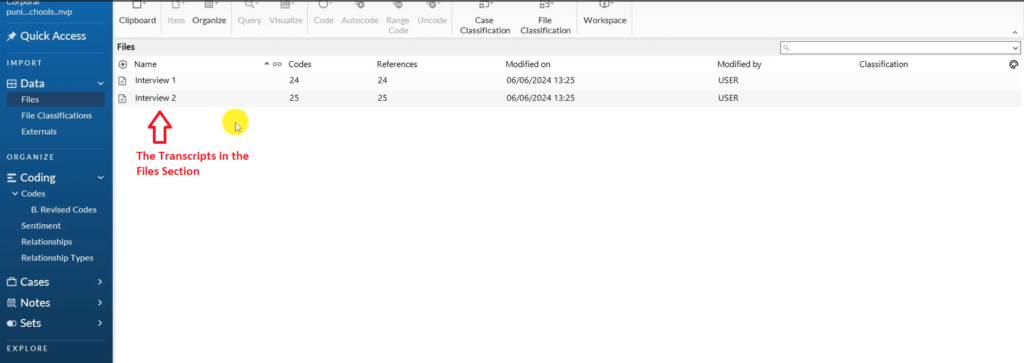
Transcripts in the Files Section
These two are the ones I analysed to get initial codes.
If you read my previous article,Qualitative Coding in Nvivo you’ll see the process of coding.
And ideally, we are using the Braun and Clarke six step framework for thematic analysis. Let me show you the Braun and Clarke.
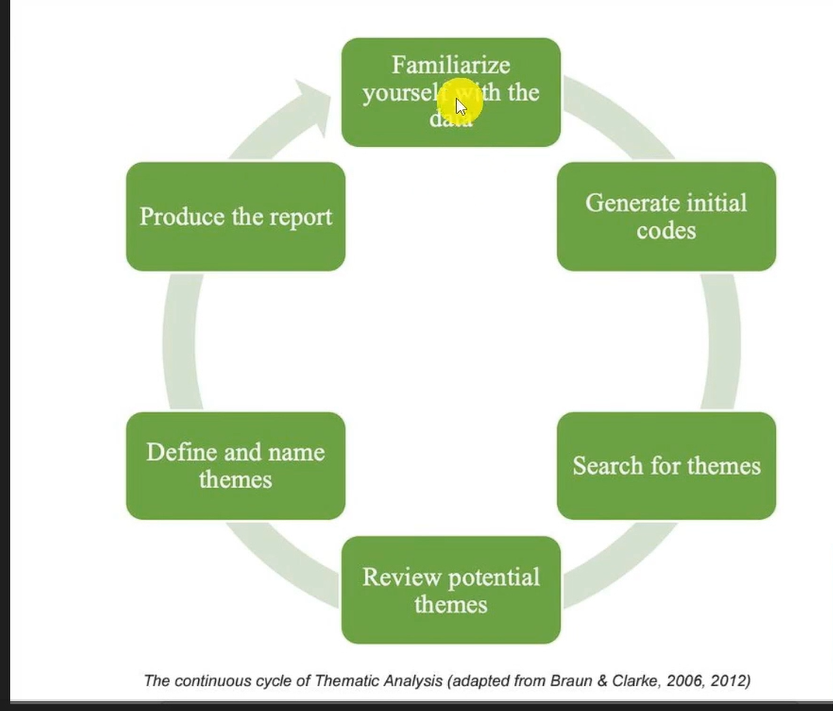
The Braun and Clarke Six Step Framework for Thematic Analysis
What we do first is we familiarize the data. Then we get initial codes as I’ve shown in my previous articles.
Now we are looking for themes.
This article is about looking for themes.
Again, let’s go to the codes, as I was coding, I was using colour codes to mark the codes that might be related.
The process of moving from codes to themes involves looking for a shared pattern of meaning among the codes.
So, the first thing that I’m going to do, I’m going to go to the code section in Nvivo and create a folder called preliminary themes.
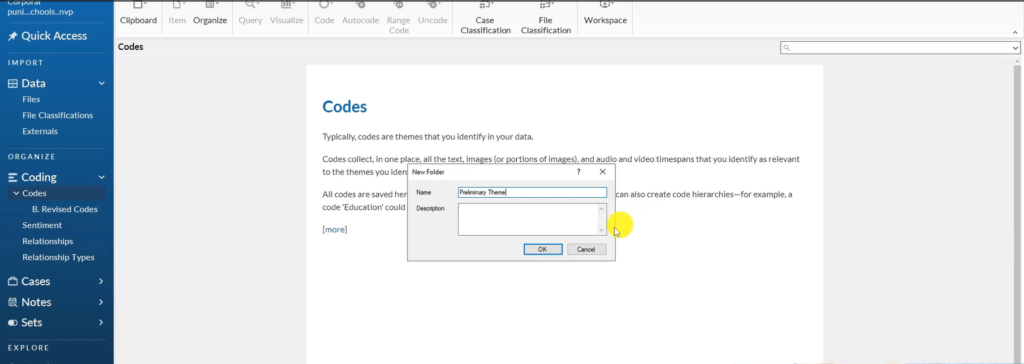
The Preliminary Theme Folder is Created
And then, I’m going to copy all initial codes in the preliminary theme folder.
Now from this folder called preliminary themes, we are going to start looking at different codes to look for a pattern of shared meaning so that we can form our preliminary themes.
For instance, the codes in dark red represent a particular theme.
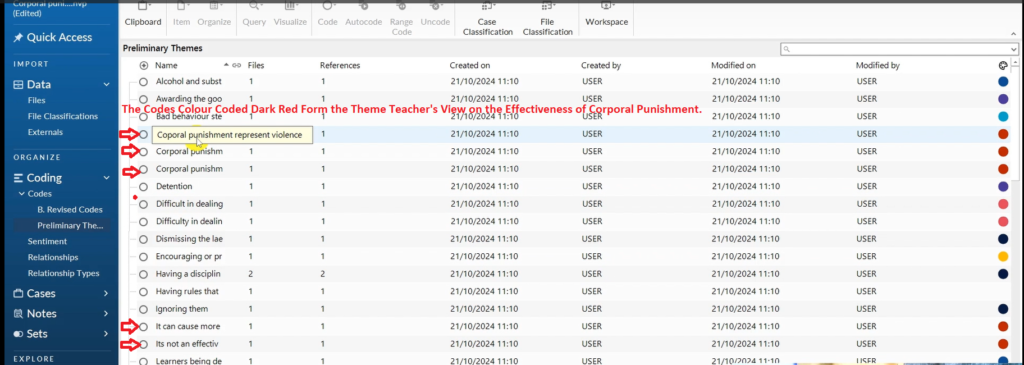
Codes Colour Coded Dark Red
The theme that comes up from the codes in red teacher’s view on the effectiveness of corporal punishment.
I’m going to scroll down, come to the blank space, right click, create new code and call this, now this is not a code as you’ll see later, teachers’ views on the effectiveness of corporal punishment and click okay.
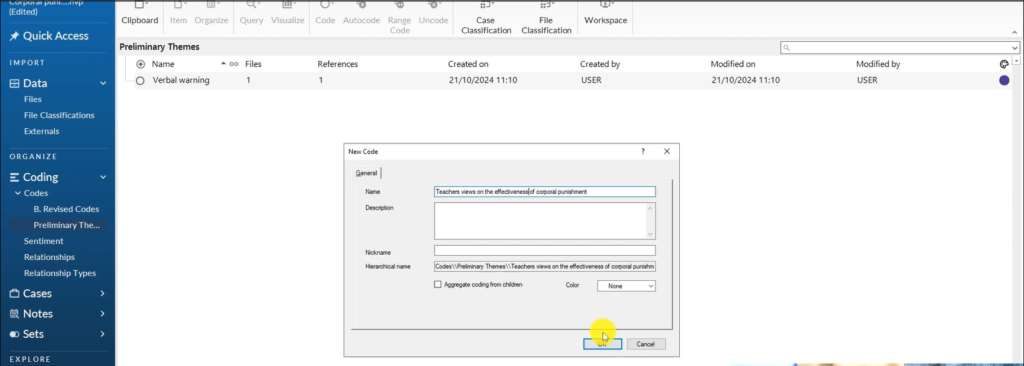
The Theme Teachers’ View on the Effectiveness of Corporal Punishment is Created
This is a theme now.
So, what do I do? I drag all the codes related to teacher’s view on the effectiveness of corporal punishment. The codes that are related to the theme are in red.
Remember, we first look at the codes, look for a pattern of shared meaning, created this theme, and now we are going to drag the different codes about teacher’s views on the effectiveness of corporal punishment inside that preliminary theme.
If you check the theme teachers view on the effectiveness of corporal punishment you can see its codes.

The Theme Teachers’ View on the Effectiveness of Corporal Punishment with its Codes
Teacher’s views on the effectiveness of corporal punishment.
I can also add a full description of what this theme means, or what this theme represents based on the shared meaning of the different codes.
I can say that this theme represents the views of different teachers on how effective corporal punishment is in disciplining learners that’s the first preliminary theme.
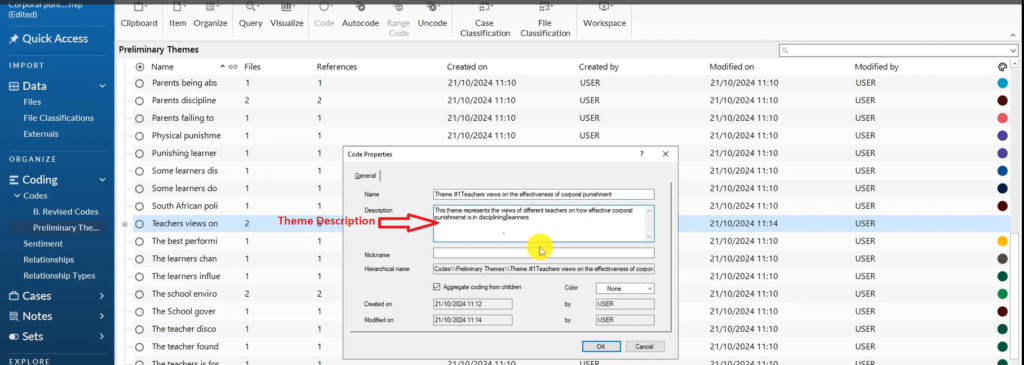
The Description of Theme 1
Let’s look at another theme that comes out from all these codes.
Remember I had already tagged the codes with different colours based on the questions that these codes came from in the interview guide.
When I was coding, I was making sure, for instance, all codes from question one are blue in colour, as I previously explained. All codes from question two are purple, and so on and so forth.
For instance, here we have codes that came from the same question.
If you look at the codes with the colour code dark blue, they form a theme.
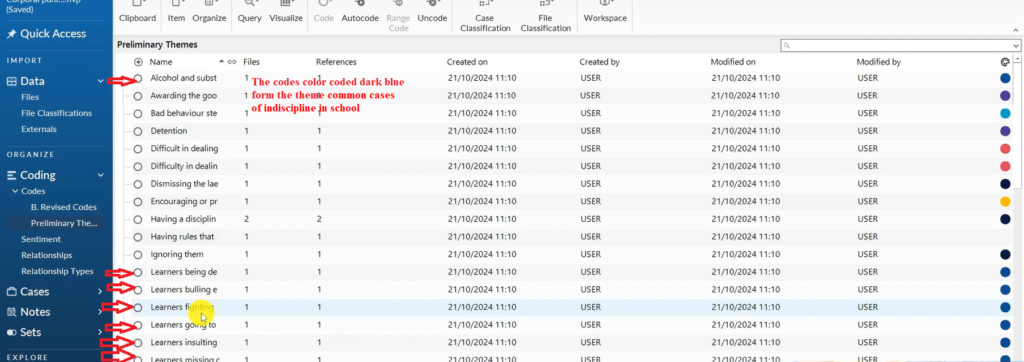
Codes Colour Coded Dark Blue
The theme is common cases of indiscipline in school, okay?
I can right click in the blank space and say common cases of indiscipline in school.
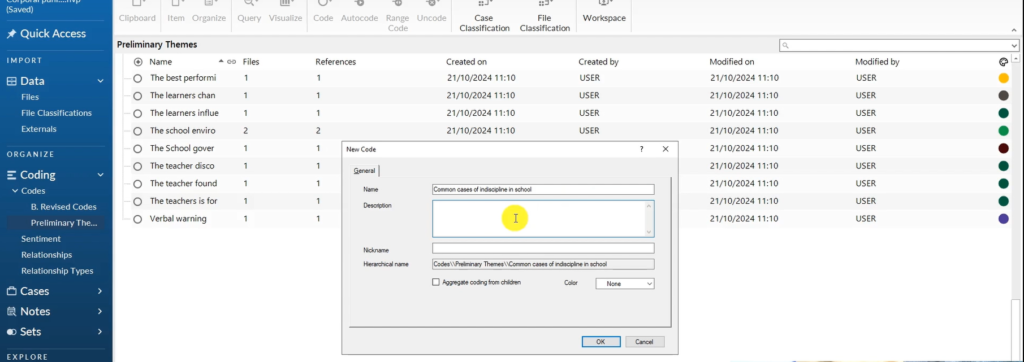
The Theme Common Cases of Indiscipline in School
And I can write a description for this.
This theme represents the different cases of indiscipline in school. That teachers encounter in school. Okay.
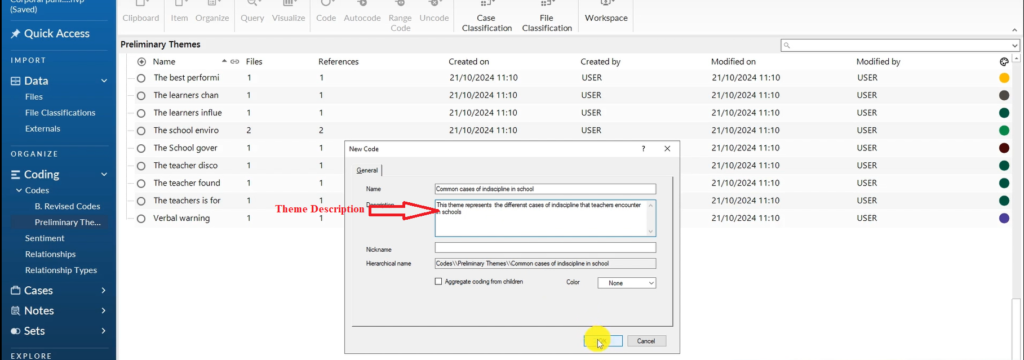
The Description of Theme 2
Remember for every theme you have to put a description.
After I create the theme, I then go and drag all the codes with the dark blue colour code into the theme.
And that’s how we form the second theme.
Let’s look at another theme that we can see it’s more prominent.
If you look at the two codes colour coded light blue, they form the theme causes of learners’ indiscipline.
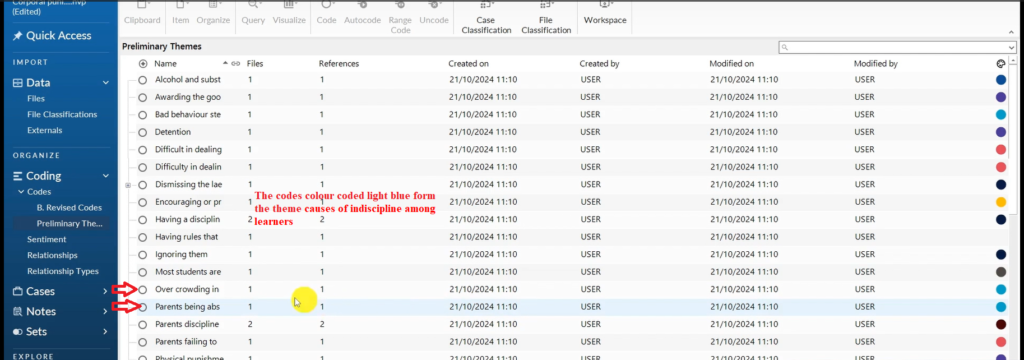
Codes Colour Coded Light Blue
I can right click, and call these causes of indiscipline among learners.
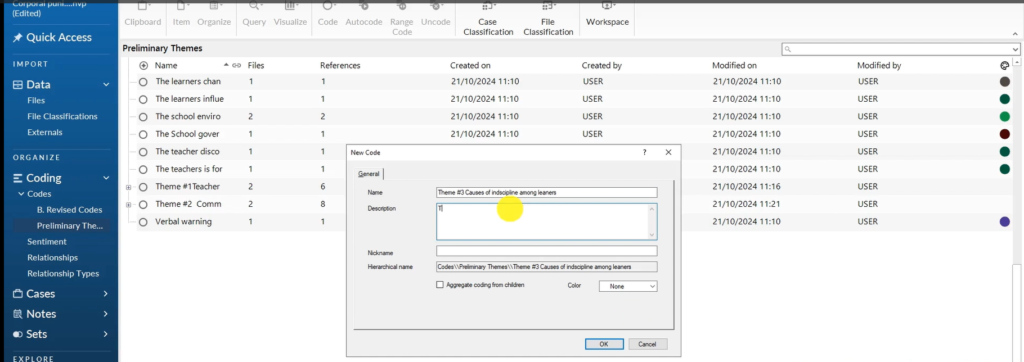
The Theme Causes of Indiscipline among Learners is Created
We can add a description these are the different causes of indiscipline according to teachers.
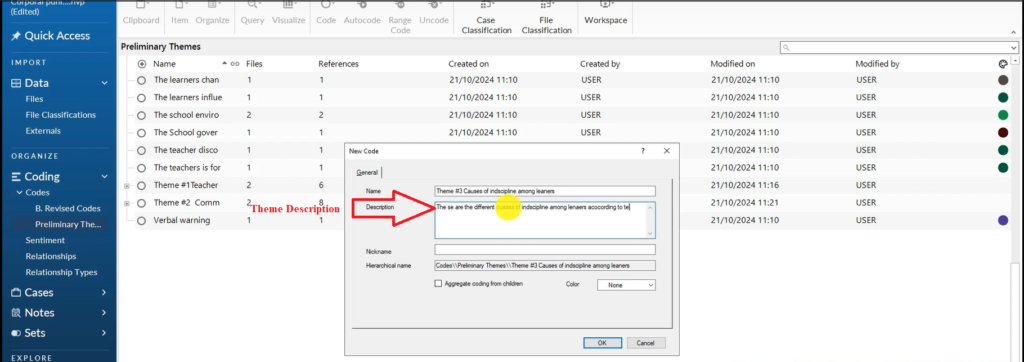
The Description of Theme 3
Let’s look at some other kind of theme.
If you look at the codes in purple,
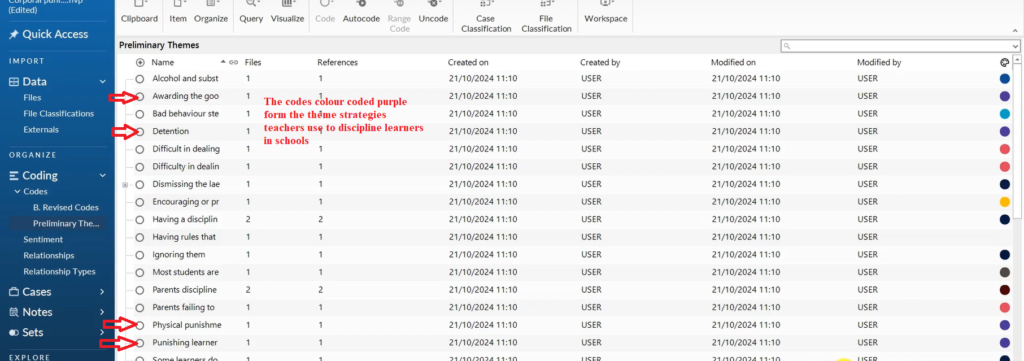
Codes Colour Coded Purple
They form the theme; strategies teachers use to discipline learners in schools.
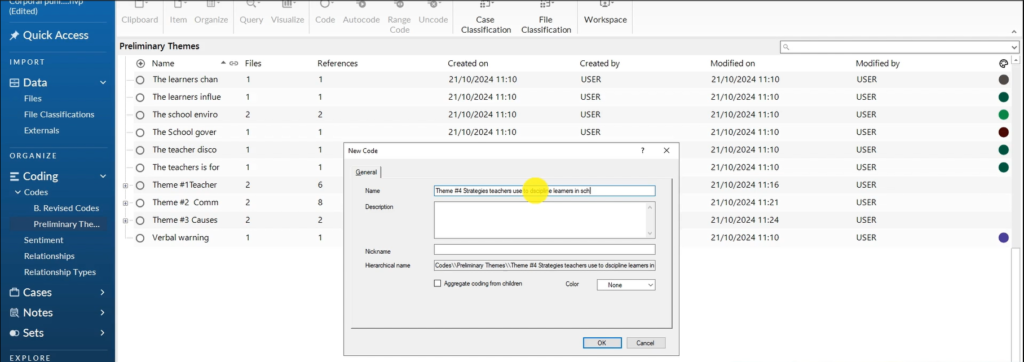
The Theme Strategies Teachers use to Discipline Learners in Schools is Created
The theme description is these are the different strategies that teachers use to discipline learners in public schools.

The Description of Theme 4
We drag and drop the code in purple to the theme strategies that teachers use to discipline learners in public schools.
And you see, we have another theme there.
Those are some ways to come up with themes.
There are other codes with a brown colour.
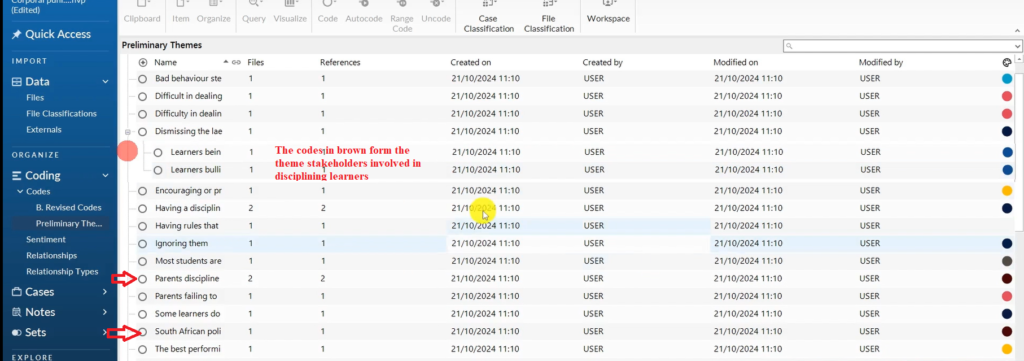
Code Colour Coded Brown
If you look at the codes, they form the theme stakeholders involved in disciplining learners.
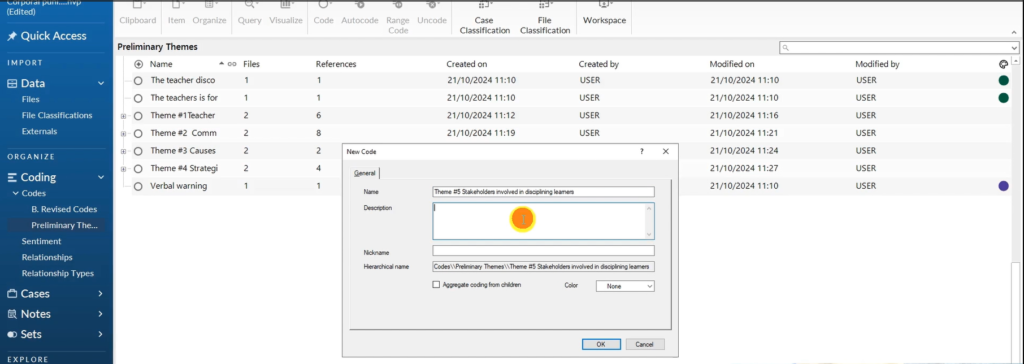
The Theme Stakeholders Involved in Disciplining Learners is Created
The theme description is these are the different stakeholders who are involved in disciplining learners in public schools. Click OK.
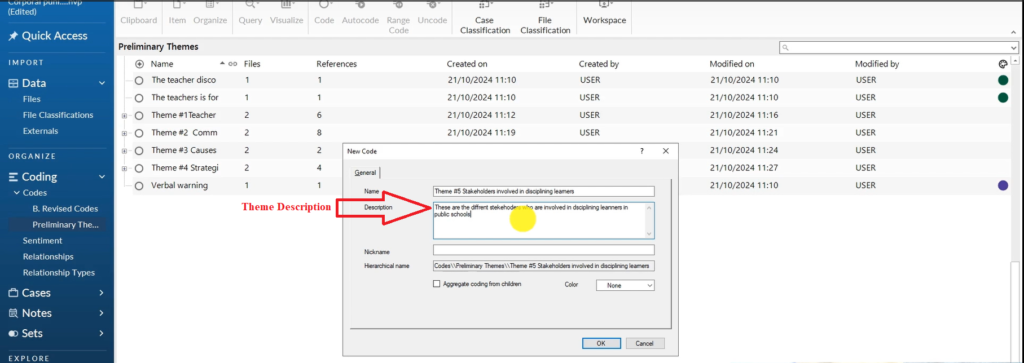
The Description of Theme 5
I will then drag and drop all the codes in brown to the theme stakeholders involved in disciplining learners.
I have shown you examples of how to develop themes and we have five themes.
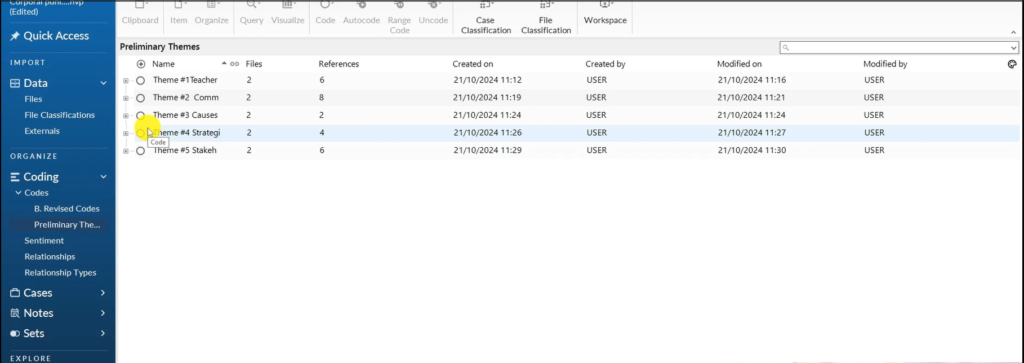
The Five Themes
And that’s basically how you get themes by looking at your initial codes, look for a pattern of shared meaning, then combining the codes with shared meaning together.
We can always come and get sub themes in some instances, but this is how we get themes directly from initial codes.
We combine them based on shared meaning to get final themes.

